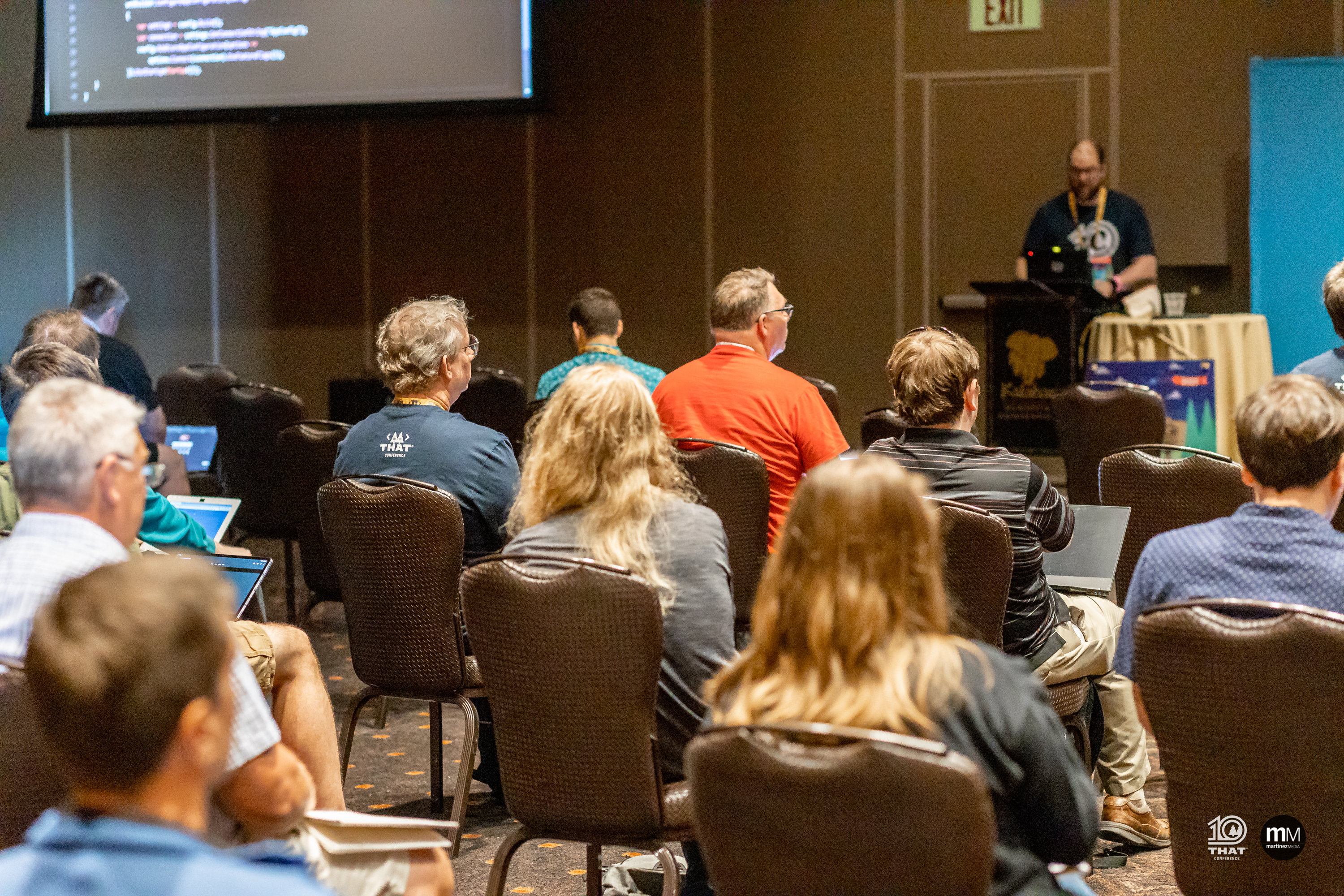Presenting Best Practices - Part 1

Presenting and speaking are skills that require practice to hone. I was a consultant for many years presenting to clients and customers of all levels and sizes. In addition, I started speaking and presenting at meetups, user groups, and conferences. Over the years, I practiced, I read, and I gave a lot of presentations. I’d like to share some of the learnings and best practices I’ve found in that time. I plan multiple posts, starting with Preparation. I’ll have more on slide design, and presentation tips.
Preparation
If you are building a presentation for a conference or work, it is tempting to just dive in and put everything on a few slides. But you need to prepare by understanding the audience and the message. Presentations should support your communication, not BE your communication. It is important to know not only WHAT you want to say, but WHO you are saying it to. It all starts with knowing your audience.
Know Your Audience
Who are you presenting to: Engineers, Sales, Managers, C-Suites (CEO, CIO, CTO, CFO)? Each group has a set of unique needs and wants. What questions or areas are they going to be interested in? If it is a diverse audience, you will still need to be able to communicate with all of them. You should always keep your audience in mind when building content and presenting.
Why are they here?
Why are they here? What do they think they’re going to get out of this presentation? An engineer might be here for a technical presentation, a salesperson might be here to learn features to sell a product, a manager might be here to help a team stay on track, the C-Suite might be here to understand costs or timelines. Showing value early keeps people engaged. One of the first things you should do is tell your audience what’s in it for them.
Familiarity with the Content
How familiar are they with the content? Are these team members you have been collaborating with? Are they new to the topic and here for updates? The level of familiarity will determine the use of terms, acronyms, and jargon. Using jargon with a general audience can cause confusion and create a barrier to communication. If you use jargon, it can be helpful to define it. If people are having difficulty following the terms and jargon, they will lose interest and stop listening.
What is the value?
What is the value? Is this a collaboration meeting with Engineers working on an issue or problem? A status report to management on the progress of implementation? What are the attendees looking to get from this presentation? The core message might be the same for different audiences, but how you present that message and the value the audience gets from it might be different.
Know your message
So, you know who you are presenting to and a high-level idea of what you are trying to convey. Now you need to know your message in depth. What are the points you are trying to get across?
Intent
What is the intent of the presentation? Is it to inform, to persuade, or to instruct the audience? Each of these types of presentations has a different flow, style, and outcome.
Informational
For instance, an informational presentation aims to inform the audience about a specific topic. Think of it as a written report presented verbally. In business, these are the most common types of presentations. The goal is to share information, with an emphasis on clear and concise communication. You should limit your presentation to 3-4 key messages. Any more than that can be too much information and overload the audience.
Persuasive
A persuasive speech aims to move, motivate, or change the audience. You want the audience to perform a certain action or convince them to adopt the belief or opinion of the speaker. This might be a sales pitch, a recommendation for an architectural approach, or adopting a new practice. Persuasion has been studied by experts and they have observed what works and what doesn’t.
Instructional
If it is an instructional presentation, how much detail do you need to put into the presentation? A fun example is this great YouTube video, Exact Instructions Challenge - THIS is why my kids hate me. Josh Darnit, where a father is trying to follow the exact instructions for how to make a peanut butter and jelly sandwich. Finding the right level of detail in the instructions is important and knowing your audience can help.
Level of Content
What is the level of content? This can be difficult because it is hard to know what others know. Let’s say you are presenting to beginner engineers. The Curse of Knowledge means that you might struggle, because you intuitively assume that things that are obvious to you are also obvious to the engineers. Finding that right balance is important.
Conclusion
I realize this post was light in specifics, but knowing your audience is the #1 best practice for presenting. If you know the audience, the next recommendation is knowing your goal or intent of the presentation. These might seem like basic recommendations, but they can turn an average presenter into a great presenter.
Until Next Time.
Recommendations
I would like to give a few recommendations that will go deeper into many of these topics. These books are great additions for thinking about not only content, but how to present it.



